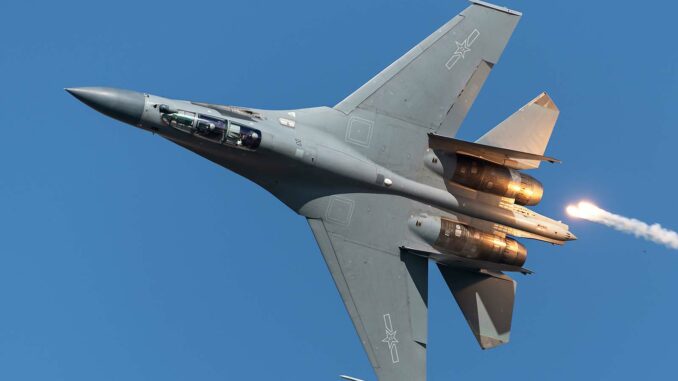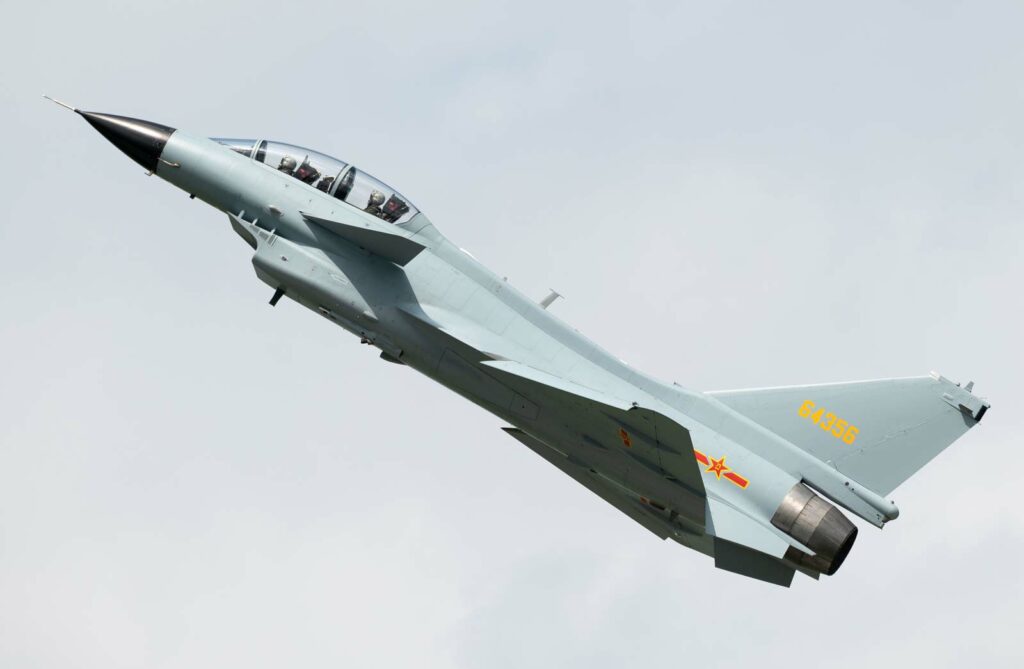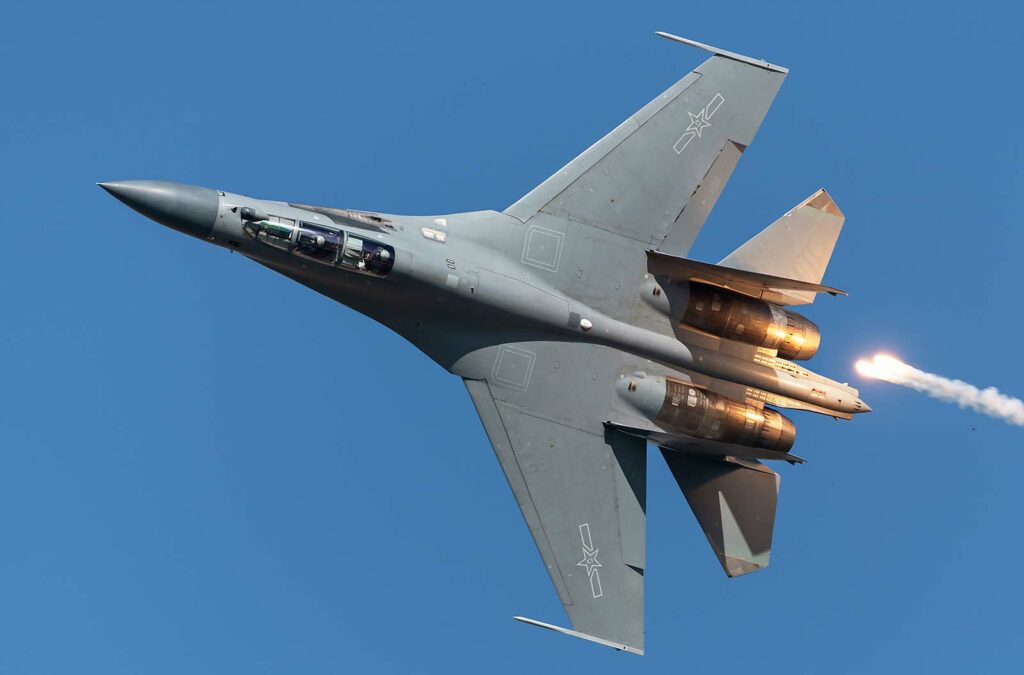
The recent expansion and upgrading of China’s fighter fleet, as revealed in a Pentagon report, highlights a significant advance in Chinese military capabilities. This evolution, marked by the introduction of new fourth-generation fighters and the development of domestic engines, raises questions about the strategic and geopolitical implications for regional and global stability.

Expansion and improvement of the fighter fleet
Quantitative and qualitative growth
In 2022, the People’s Air Liberation Army (PLAAF) and People’s Liberation Army Navy (PLAN) had 1,300 fourth-generation fighters out of a total of 1,900 aircraft, compared with 800 out of 1,800 by the end of 2021. This increase suggests not only a fleet expansion of 100 aircraft, but also a significant replacement of older models with more capable jets.
Towards a predominantly fourth-generation force
The Pentagon report indicates that the majority of China’s air force will be made up of fourth-generation aircraft in the next few years, signalling rapid modernization and enhanced operational capabilities.
State-of-the-art fighter jets
Chengdu J-10
The J-10, a single-engine multi-role aircraft, illustrates China’s ability to produce fourth-generation fighters. Entering service in 2018, the J-10C represents the “pillar” of the PLAAF.
Shenyang J-16
The twin-engine J-16, which entered service around 2016, marks a significant leap forward in Chinese aviation, demonstrating less dependence on Russian technologies. This multi-role fighter is capable of carrying a diversified arsenal, even surpassing the fifth-generation J-20 in terms of weapons-carrying capacity.
Shenyang J-15
The J-15, a carrier-based heavy fighter, is in service with China’s three aircraft carriers: Liaoning, Shenyang and Fujian. Constantly evolving, China is actively developing a more advanced version of this aircraft.
Progress in domestic engine development
Replacing Russian engines
China has made significant progress in the development of domestic engines, gradually replacing Russian engines in its jets, as in the J-10 and J-20, with locally produced WS-10 engines.
Development of the WS-10
Designed in the 1990s, the WS-10 turbofan engine has undergone several improvements, overcoming initial challenges related to power and maintenance. The adoption of the WS-10 in models such as the J-10C marks a turning point in China’s technological self-sufficiency.
Strategic and geopolitical implications
A challenge to regional stability
The rapid expansion of China’s military air capabilities could destabilize the balance of power in the Asia-Pacific region. Neighboring countries, as well as the United States, could perceive this rise in power as a threat, increasing regional tensions.
Impact on Sino-American relations
The rhetoric of “combat and victory against a powerful enemy” associated with this rise in power clearly targets the United States, adding a further dimension to the strategic rivalry between the two superpowers.
Implications for the arms race
This technological advance could prompt other nations to accelerate their own military development, potentially leading to an arms race in the region.

The rapid modernization of China’s fighter fleet, supported by the development of advanced domestic technologies, is a strong signal of Beijing’s intention to strengthen its military posture on the international stage. This development poses considerable challenges in terms of regional security and geopolitical dynamics. The response of international players, notably the United States and China’s neighbors, will determine the extent to which this rise in power influences the global and regional strategic balance. The need for agile diplomacy and a balanced strategic approach is more essential than ever to maintain stability and avoid escalating tensions.
War Wings Daily is an independant magazine.